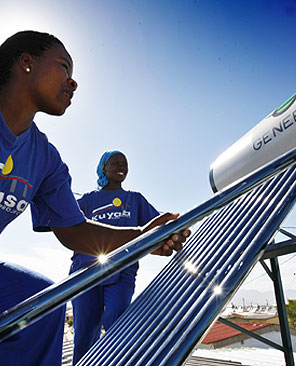

Impact & Validation  |
||
Socio-economic impact: The project has a had a marked impact on the socio-economic well-being of the target community. A 700 sample impact survey took place during July 2009 as a follow up to a 2,000 sample baseline survey the previous year. Formal publication is pending. However, initial analysis shows the following results:
The benefit of this is not just the cost savings, but also the relief on respiratory illness from paraffin fumes and the improved safety having done away with open flame heaters.
The use of paraffin heaters exacerbates the condensation problem. This is because the burning of 1 liter of paraffin releases an equal amount of water vapour. Burning paraffin at night was therefore the equivalent of spraying a liter of water around a 30m2 room every evening. Doing away with the need for paraffin heaters, therefore, has a massive impact by reducing condensation and the resultant negative consequence for health and thermal comfort.
The following quotations from residents provide some insight into the social impact of the project: “The project brought skills and jobs for young men, they don’t hang around street corners anymore, it has brought dignity to the community” “I never thought a poor person like me could have a geyser. The project has given the people of Kuyasa dignity” “The project makes us proud” “I get a lot of visitors now, no one can laugh at my house” “We are warm now. We are saving. We don’t get flu as often. Life is much easier” |
 |
|
©2009 - Kuyasa CDM - +27 21 461 7827 - [email protected] - Designed and hosted by 4sqr - Boden Media - Login |